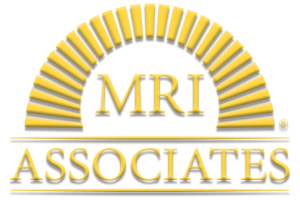3D mammography, also known as digital breast tomosynthesis (DBT), is an advanced imaging technique used to detect breast cancer. Unlike traditional 2D mammography, which takes flat images of the breast, 3D mammography creates multiple thin slices or images of the breast from various angles. This allows radiologists to view the breast in a three-dimensional format, making it easier to identify abnormalities.
By federal law, all mammograms must be performed by specially trained and certified X-ray technologists on special mammography equipment. Specially trained radiologists must evaluate all mammograms. In Connecticut, all mammography facilities must be accredited by the American College of Radiology (ACR) and the Food and Drug Administration (FDA) must certify them to perform mammography. The Connecticut State Department of Radiation Protection inspects all Connecticut facilities annually on behalf of the FDA to ensure that the highest standards are met in all aspects of mammography, including the mammography equipment, personnel, interpreting physicians and reports. Those facilities performing mammography must therefore make a substantial commitment to ongoing quality improvement and testing. ACR accredited and FDA certified facilities must display their credentials in a prominent place for all to see.
Mammograms are performed using two different positions for each breast. This allows more thorough evaluation of breast tissue. A compression paddle is used to spread out the breast tissue and obtain more uniform thickness. This greatly improves detail and image quality, making it possible to see very small abnormalities. At the same time the amount of X-rays needed for the examination are significantly reduced. Compression should feel firm and not painful. It is not dangerous to use breast compression for these examinations. Although mammograms use X-rays, modern equipment produces better images than ever before at a much reduced exposure to the patient. Virtually all medical experts consider mammography safe to perform with modern equipment.
Digital mammography is a new method for obtaining mammograms. Instead of using a sheet of x-ray film to create an image, the digital system uses a receptor plate that can be scanned or read by a computer to create a mammogram image that can be viewed on a computer screen or printed out on a piece of film just like the traditional mammogram film image. With digital mammography however, the image can be adjusted or optimized on the computer so that detail can be improved significantly even if the mammogram is a little over or under exposed. This can reduce the need for repeat mammograms. Because the computer can read the image quickly, the technologist can check the mam mogram image almost instantly; it is no longer necessary to wait for the x-ray film to be developed.
Mammograms allow much earlier detection of many breast cancers than breast self-examination (BSE) or breast examination by a healthcare provider. Nonetheless, BSE and breast exams remain a key component of ongoing breast health care and should also be performed regularly. The American Cancer Society and most major medical organizations recommend women begin to have annual screening mammograms by age 40 or younger if certain risk factors (such as a family history of breast cancer) are present.
Although the results of the mammogram may be communicated to a woman at the time of the appointment, most patients will receive their results in the form of a written report a few days after the examination is completed. This written report is required by law for most patients. Occasionally patients will be asked to return for additional views after a screening to clarify difficult to assess areas or better evaluate possible abnormalities. Most of the time these additional views are normal. Patients who have symptoms such as a lump or thickening in the breast may undergo diagnostic mammography to evaluate their problem. This examination is tailored to zero in on the patient’s problem and may include additional spot or magnification views or the area of concern

Main Office:
PALM HARBOR MRI
32615 US Hwy 19 North
Palm Harbor, FL 34684
Phone: 727.787.6900
Fax: 727.216.4789